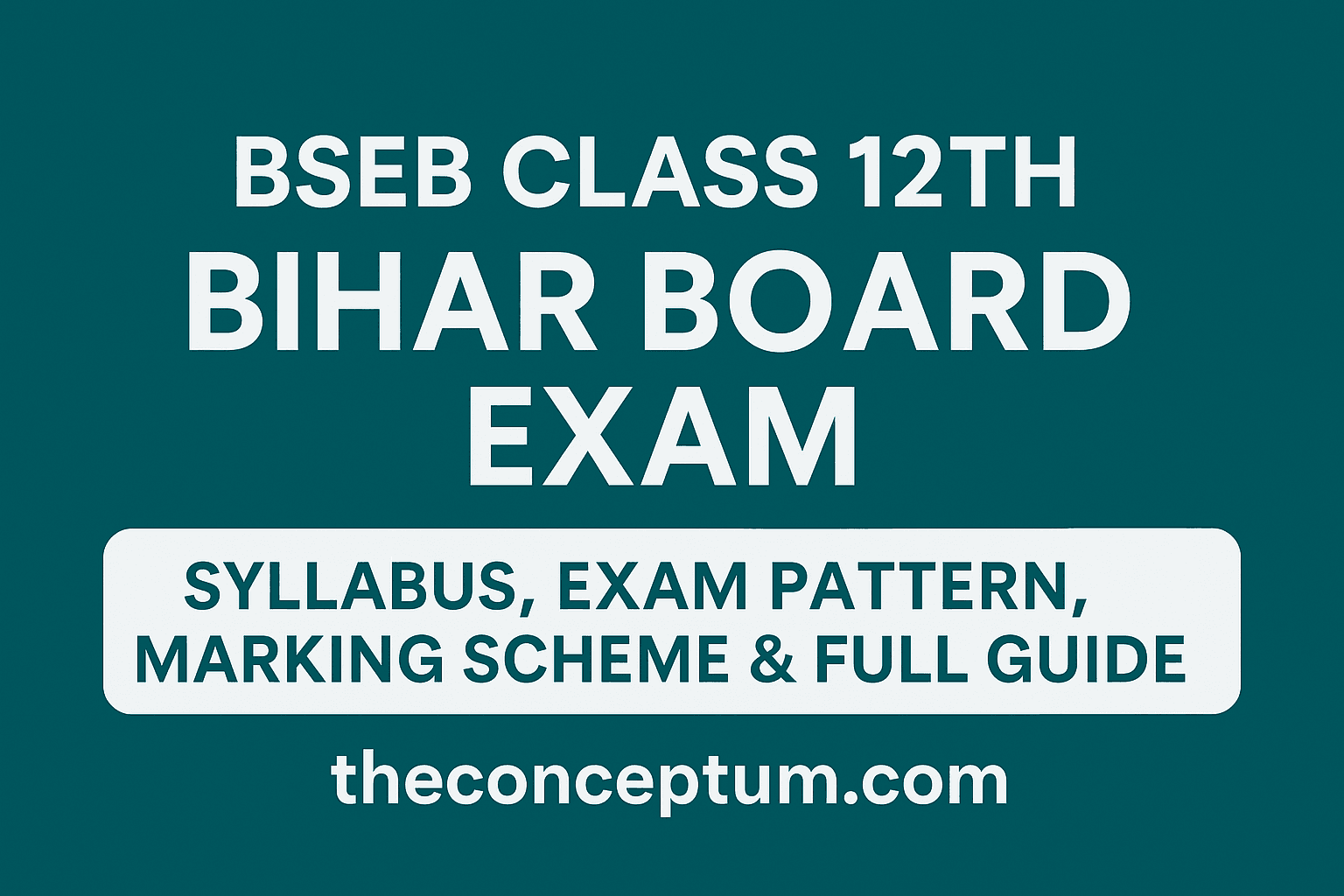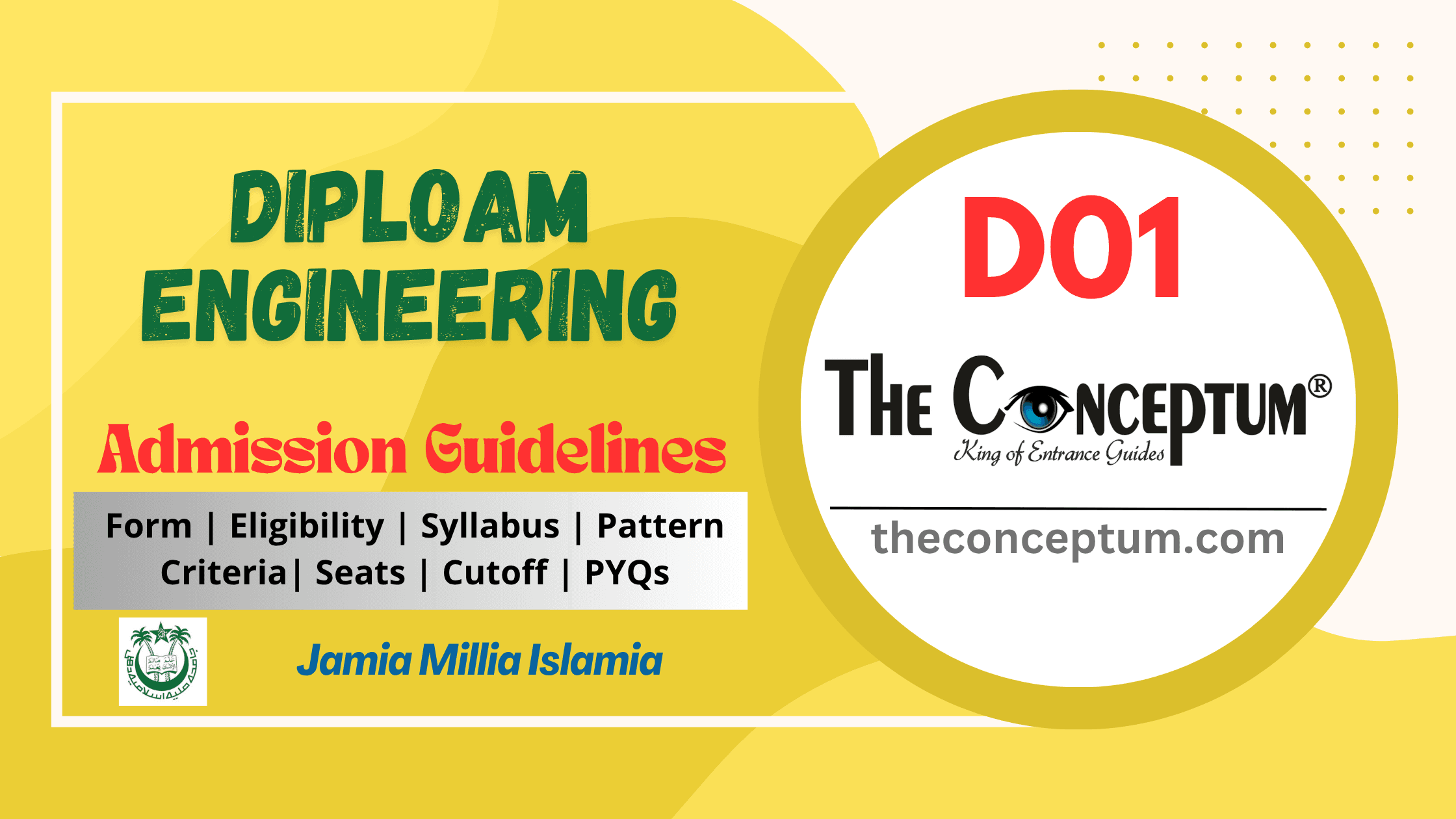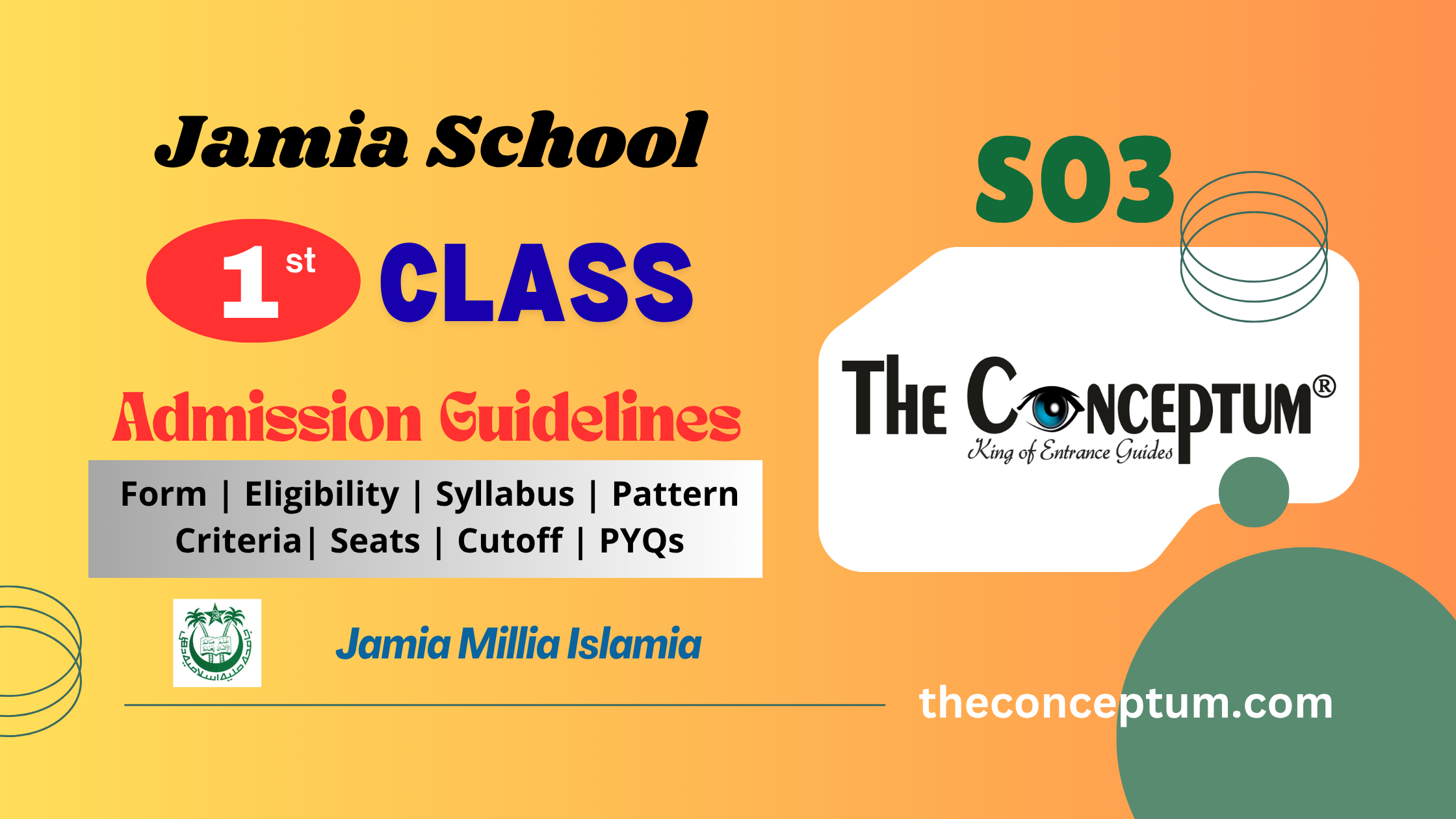
BSEB Class 12th Bihar Board Exam | Syllabus, Exam Pattern, Marking Scheme & Full Guide
16/06/2025
Jamia BA Hons History Entrance Exam (B03) – Syllabus Pattern, Topics & Expert Preparation Strategy
16/06/2025Jamia Diploma in Engineering Entrance – Complete Guide 2026
JMI New Delhi, (Jamia Millia Islamia) is one of the premier central universities in India offering various diploma, undergraduate, and postgraduate courses. Among these, the Jamia Diploma in Engineering Entrance Syllabus programme offered by the University Polytechnic (Faculty of Engineering & Technology) is one of the most sought-after technical diploma courses.
Every year, JMI conducts an entrance exam for admission into the Diploma in Engineering (3-Year Full-Time) programme. Aspirants looking to appear for the exam must understand the complete Jamia Polytechnic Diploma in Engineering Entrance Syllabus, exam pattern, eligibility, and other essential details to prepare effectively.
Planning to crack the Jamia Diploma in Engineering Entrance Syllabus 2026? Whether you’re applying for University Polytechnic (AMU) or Jamia Millia Islamia, this detailed post covers everything—syllabus, exam pattern, cut-off, and why thousands of toppers choose The Conceptum as their trusted guide.
Jamia Millia Islamia University Diploma in Engineering Syllabus
At Jamia, once students clear the entrance exam, they can be admitted into any of the available engineering streams depending on their merit rank and seat availability:
Civil Engineering – Infrastructure, construction, and urban planning.
Mechanical Engineering – Manufacturing, automotive, and design industries.
Electrical Engineering – Power systems, electronics, and machinery.
Electronics Engineering – Communication systems and automation.
Computer Engineering – IT, software development, and tech solutions.
Applied Sciences – Strong foundation for multidisciplinary careers.
Jamia Diploma in Engineering Entrance Syllabus & Pattern
1. Entrance Test Overview
| Test Component | Subjects | Weightage | Duration | Negative Marking |
|---|---|---|---|---|
| Section A | Mathematics | 40% | 120 mins | Yes (–0.25 mark) |
| Section B | Physics | 30% | Yes | |
| Section C | Chemistry | 30% | Yes |
- All questions are objective-type (MCQs) based on Class 10th level.
- Use of OMR sheet is mandatory.
- Negative Marking: Yes (Each incorrect answer deducts 0.25 mark.)
- Total marks: 100
2. Subject-wise Syllabus
🔹 PHYSICS (30 Marks)
| Unit | Topics Covered |
|---|---|
| Motion & Mechanics | – Distance and displacement – Scalar and vector quantities – Addition and subtraction of vectors – Resolution of vectors – Speed and velocity (uniform & non-uniform) – Circular motion – Mass and weight – Momentum and impulse – Laws of motion – Conservation of momentum – Work, power and energy – Law of conservation of energy |
| Waves & Sound | – Characteristics of sound waves – Longitudinal and transverse waves – Relation: v = nλ |
| Light – Reflection & Refraction | – Spherical mirrors and mirror formula – Laws of reflection and refraction – Refraction through glass slab and prism – Total internal reflection – Dispersion of light |
| Optics | – Lens formula – Power of a lens – Uses and working of Microscope and Telescope |
| Electrostatics & Current Electricity | – Coulomb’s Law – Electric current, potential and potential difference – Ohm’s Law – Resistance in series and parallel – Heating effect of electric current – Electric energy and power |
| Electrochemistry | – Chemical effect of current – Electroplating – Electrolysis |
| Magnetism & Electromagnetic Devices | – Magnetic effect of current – Electric motor – Electric generator – A.C. and D.C. |
| Modern Physics | – Nuclear fission and fusion – Chain reaction |
🔹 CHEMISTRY (30 Marks)
| Unit | Topics Covered |
|---|---|
| Basic Concepts of Chemistry | – Atomic and molecular mass – Mole concept – Avogadro’s Number & law – Ideal gas and gas laws – Ideal gas equation – Diffusion and STP conditions |
| Structure of Atom | – Fundamental particles (proton, neutron, electron) – Isotopes and isobars – Cathode rays – Rutherford’s experiment – Bohr’s atomic model (postulates) – Electronic configuration of first 20 elements |
| Periodic Classification | – Modern Periodic Table – Gradation of properties: → Atomic size → Ionisation energy → Electron affinity → Electronegativity → Metallic character |
| Chemical Bonding | – Electrovalent (ionic) bonds – Covalent bonds – Coordinate bonds |
| Chemical Reactions | – Writing chemical equations – Oxidation and reduction (redox reactions) – Rate of reaction and affecting factors |
| Solutions | – True solution – Colloids – Suspension |
| Acids, Bases, and Salts | – Properties and examples – Strong and weak electrolytes – pH of a solution |
| Metallurgy | – Metallurgical processes – Manufacture and chemical properties of: → Sodium Carbonate (Na₂CO₃) → Ammonia (NH₃) |
| Periodic Group Properties | – Properties of: → Halogens → Alkali metals |
| Sulphur Compounds | – H₂S, H₂SO₄, and SO₂ – properties and reactions |
| Allotropy | – Allotropes of Sulphur, Phosphorus, and Carbon |
| Hydrocarbons | – Saturated and unsaturated hydrocarbons – Homologous series – Functional groups – Combustion of hydrocarbons |
🔹 MATHEMATICS (40 Marks)
| Unit | Topics Covered |
|---|---|
| Algebra | – System of linear equations in two variables – Algebraic methods of solution – Word problems on linear equations – Quadratic equations (factorization & formula) – Applications of quadratic equations – Arithmetic Progression (A.P.): general term & sum to n terms – Instalment payment & buying |
| Mensuration | – Surface area and volume of: → Cuboid → Cube → Cone → Sphere |
| Geometry | – Vertically opposite angles – Congruence of triangles (SAS, ASA, SSS, RHS) – Similar triangles – Pythagoras theorem and applications – Circles: → Circle through three points → Equal chords → Angle at centre by arc/chord → Angle in semicircle/segments |
| Trigonometry | – Trigonometric ratios (sin, cos, tan) for 0°, 30°, 45°, 60°, 90° – Height and distance problems |
| Statistics | – Collection and presentation of data – Frequency distribution – Mean of grouped data – Bar chart |
| Coordinate Geometry | – Coordinates of points – Distance between two points – Section formula and its applications |
Jamia Polytechnic – Fees, Seats & Admission Details
Official Fee Structure & Seat Matrix
Fee Structure (as per JMI Notification)
| Programme Type | Duration | Total Fees |
|---|---|---|
| Regular | 6 Semesters | ₹11,575 |
| Self-Financed | 3 Years | ₹30,495 |
Insurance charges extra as per JMI notification.
Seat Matrix:
| Branch | Regular Seats | Self-Financed Seats | Total Seats |
|---|---|---|---|
| Civil Engineering | 40 | 40 | 80 |
| Computer Engineering | 40 | 40 | 80 |
| Electrical Engineering | 40 | 40 | 80 |
| Electronics Engineering | 40 | 40 | 80 |
| Mechanical Engineering | 40 | 40 | 80 |
| Total | 200 | 200 | 400 |
Jamia Diploma in Engineering Entrance Syllabus Overview
Jamia Millia Islamia started offering Diploma in Engineering through its Jamia Polytechnic as early as 1979, with a vision to empower technical education among underrepresented communities. Over the years, JMI Polytechnic has gained repute for its well-rounded, practical, and affordable technical training in fields like Mechanical, Electrical, Electronics, and Civil Engineering.
Today, it stands among India’s most sought-after diploma institutes, with entrance test competition increasing each year.
Expected Cutoff Marks – Diploma in Engineering 2026
Understanding the Jamia Diploma in Engineering Entrance Syllabus helps you predict your cutoff chances better
| Institute | Category | Expected Cutoff (out of 100) |
|---|---|---|
| University Polytechnic (AMU) | General | 65–75 |
| Jamia Polytechnic (JMI) | General | 60–70 |
| University Polytechnic (AMU) | OBC/BC | 55–65 |
| Jamia Polytechnic (JMI) | OBC/Muslim/Others | 50–60 |
Why Toppers Trust The Conceptum for Exam Success Diploma in Engineering Entrance Exam 2026?
At The Conceptum, success is not an option—it’s a guarantee. Here’s why toppers trust us every year:
- NCERT-Based Content – Focused exactly as per the Jamia Diploma in Engineering Entrance Syllabus 2025
- Chapterwise Summaries – Build concept clarity with structured notes
- MCQs + Answer Keys – Practice real-exam questions with detailed solutions
- Updated PYQs (Previous Year Questions) – Stay ahead with real paper trends
- Proven Success Rate – 80%+ of students using The Conceptum saw their questions match in the exam
- Available Online – Buy from TheConceptum.com and get it delivered to your doorstep
Final Words
The Diploma in Engineering Entrance Syllabus 2025 is your roadmap to success. Whether you aim for Jamia or AMU, start with the right syllabus, use trusted books, and manage your time wisely. With structured preparation, you can easily crack this test and secure your seat in your dream engineering stream.
For updated books, practice sets, and solved PYQs — trust The Conceptum, the choice of future toppers.
Good Luck!
Frequently Asked Questions (FAQs)
-
What is the fees of Jamia Diploma Engineering?
The total fees at Jamia Millia Islamia for Diploma in Engineering are:
Regular (6-Semester): ₹11,575
Self-Financed (3-Year): ₹30,495
Insurance charges are extra as per JMI rules. -
How many seats are in a JMI diploma in engineering?
JMI offers around 400 seats in total — each branch (Civil, Computer, Electrical, Electronics, Mechanical) has 40 seats in Regular and 40 seats in Self-Financed programmes.
-
Which diploma course is best for engineering?
At JMI, the most popular diploma courses are Computer Engineering, Civil Engineering, and Electrical Engineering due to high job prospects, strong industry demand, and further study opportunities. Other options include Mechanical Engineering, Electronics Engineering, and Applied Sciences, each valuable depending on career goals.
-
Is Jamia Millia Islamia good for engineering?
Yes, JMI is one of India’s top universities for engineering, offering high-quality education, experienced faculty, modern labs, affordable fees, and excellent placement opportunities. It is ranked among the best institutions by NIRF and recognized globally.
-
Is there negative marking in the Polytechnic entrance test?
Yes. For each wrong answer, 0.25 mark is deducted.
-
How long is the entrance test?
The exam duration is 120 minutes (2 hours).
-
What is the expected cutoff for AMU Polytechnic?
For General category, the cutoff is expected around 65–75 marks.
-
Where can I get the best preparation book for this exam?
You can order The Conceptum’s NCERT-based guide and solved PYQs from TheConceptum.com.
-
How much is the weightage of each subject?
Mathematics – 40%
Physics – 30%
Chemistry – 30% -
What is the level of questions in Diploma Engineering?
All questions are based on Class 10th level syllabus.
-
What is the syllabus for Jamia Diploma in Engineering Entrance Syllabus 2026?
It is based on Class 10-level Physics, Chemistry, and Mathematics. A full subject-wise breakdown is given above in the syllabus section.
-
Is this valid for both Regular and Self-Financed (SF)?
Yes. The same entrance exam is conducted for both Regular and Self-Financed Diploma programmes.
-
When did Jamia start Diploma Engineering?
Jamia Millia Islamia began offering Polytechnic Diplomas in 1979.
-
Where can I download the Diploma in Engineering Entrance Syllabus?
You can view the full syllabus above or download it from the official portal jmicoe.in.





